How to start a vegetable garden – a veg growing expert's 10-step plan for success
Creating a vegetable garden in your backyard doesn't have to be tricky if you follow these essential steps
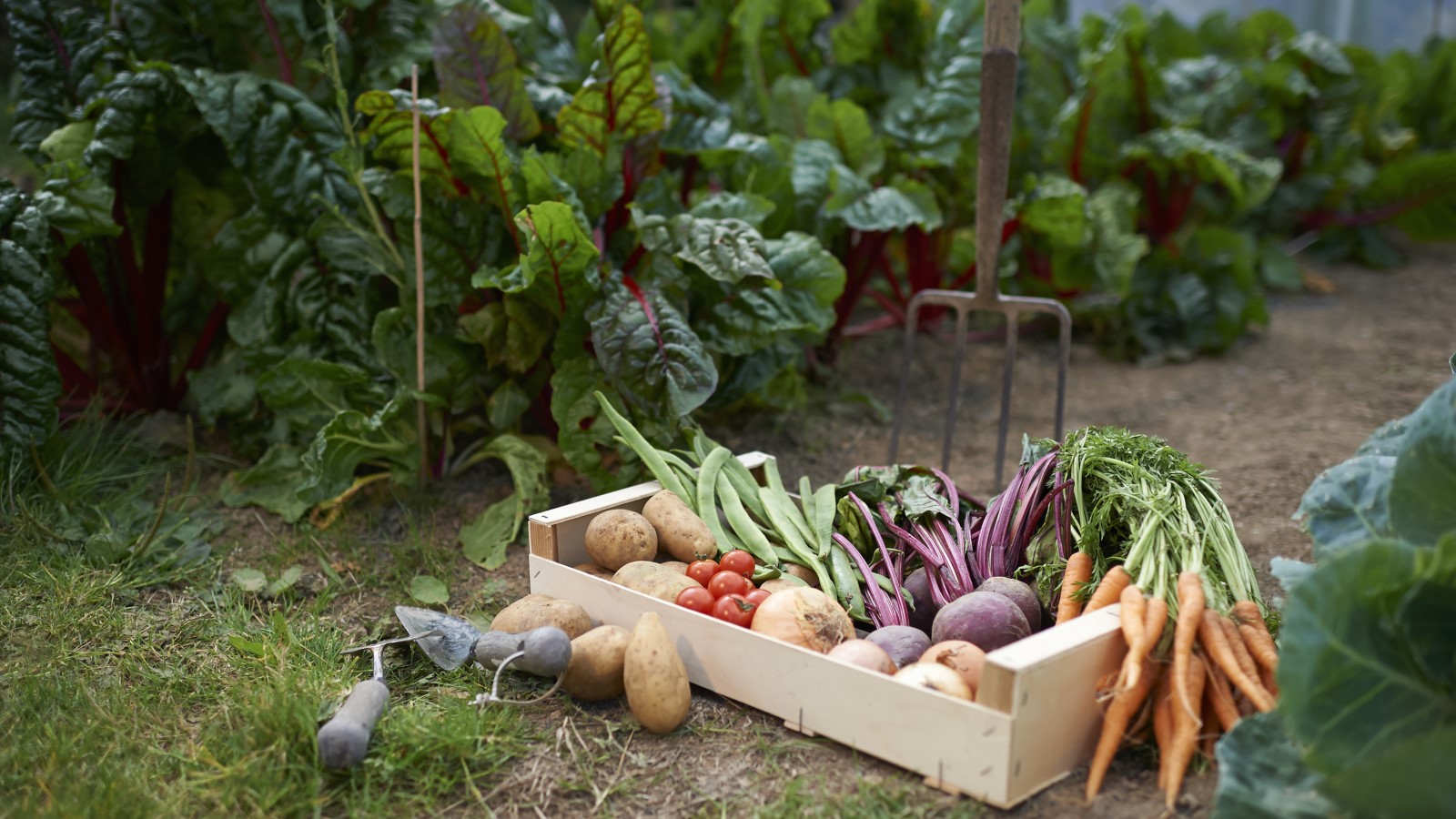

Growing vegetables is a hugely rewarding experience and those homegrown crops taste so much better than any you get from stores. Growing offers a plethora of rewards on top of those tasty vegetables alone, as gardening can offer both physical and mental health benefits that come from having your hands in the soil.
It can seem daunting to think of how to start a vegetable garden. So where do you start to go from visualizing the vegetable garden of your dreams to making it a reality in your backyard? Well, nowadays there are so many places to look for inspirational vegetable garden ideas, including TV, books and magazines to social media platforms like Instagram and TikTok.
I am a former professional kitchen gardener and have been fortunate enough to work in several fantastic vegetable gardens. I have helped plan and develop these vegetable gardens and also, in my spare time, my partner and I turned an overgrown section of field into a productive allotment garden to grow vegetables, fruit, and flowers. Using my hands-on knowledge and experience, I have outlined 10 important factors to consider when you want to start a vegetable garden in your backyard.
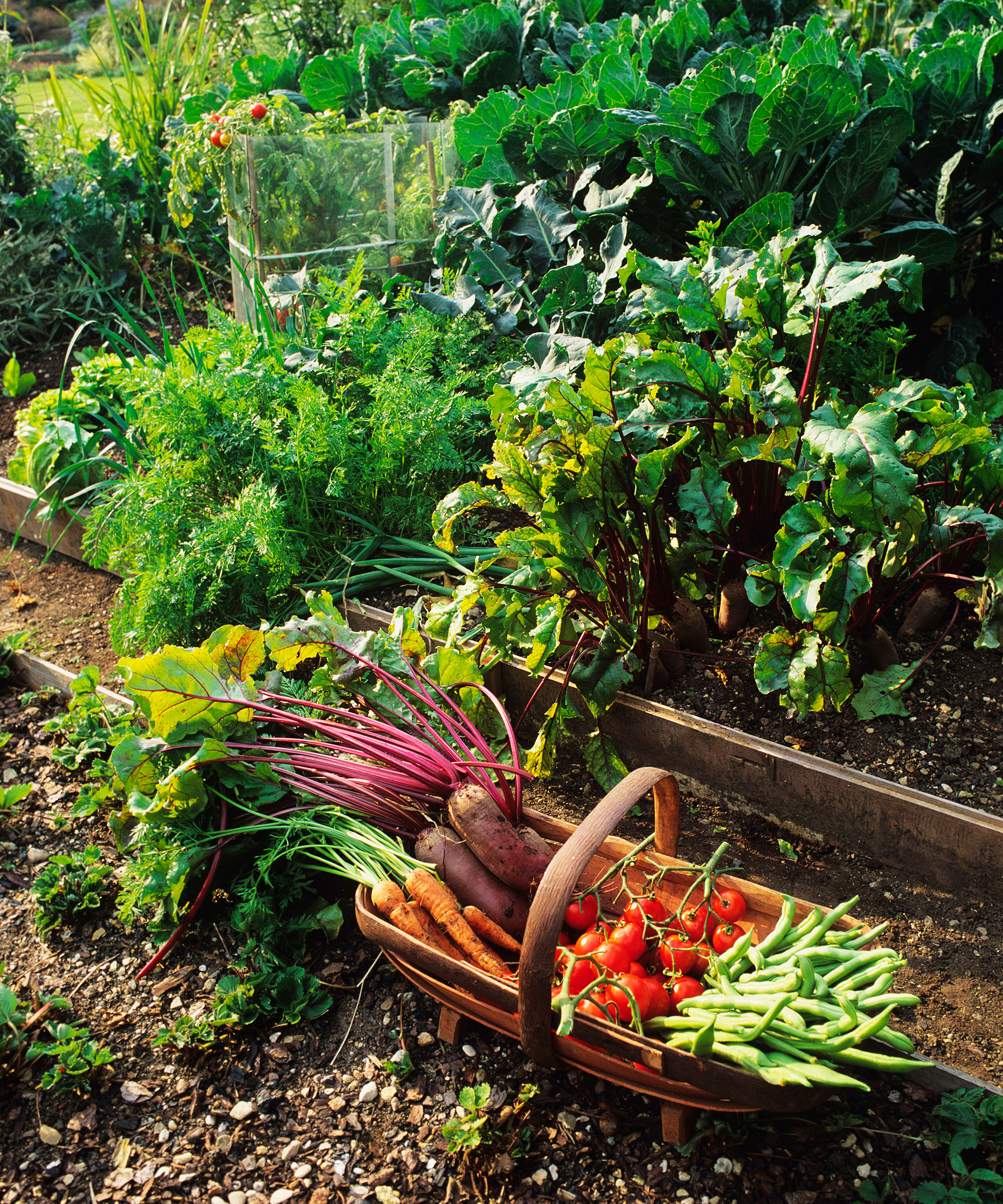
Starting a vegetable garden can transform a backyard space

Drew is a former professional gardener who has worked in vegetable gardens for the National Trust in the UK. He has also worked in the kitchen garden at Soho Farmhouse and ran the vegetable garden at Netherby Hall in the north of the UK, where he grew vegetables, fruit, herbs and flowers for chefs at a local high-caliber restaurant.
10 steps to starting a vegetable garden
There is a lot to take into consideration when starting a kitchen garden. Before you even get to sowing a seed or planting anything into the ground, you need to research and plan where you want to grow, what you want to grow, how you want to grow it, and do some physical work to get that site ready.
However, it is worth all that time and effort involved as the satisfaction that comes with eating your own homegrown vegetables is second-to-none. Once you have started, you will not want to stop. You will want to grow more, try new crops, try new varieties – it can be infectious.
1. Pick a spot
You want to choose a spot in your backyard in which your vegetables will thrive. That means finding a site for your vegetable garden that gets lots of sun, ideally around six to eight hours a day. There are vegetables to grow in shade that will be happy, though none will revel growing in the full shady spots, so avoid anywhere with overhanging trees or in the shade of buildings.
Any site for a vegetable garden wants to be level and sheltered from strong winds that could potentially damage plants. The soil wants to drain well and definitely not be waterlogged in winter – an issue I unfortunately encountered when during the first winter at my allotment I found that all the water on the site ran down to my corner and my vegetable beds turned into swimming pools for extended periods.
You want the site to have convenient access and preferably for it to be near a water source, so you do not have to carry watering cans or drag hoses too far. Finally, it wants to have rich and fertile soil, though that can be amended and there are options to use raised beds or outdoor planters if the soil is not suitable for growing vegetables.
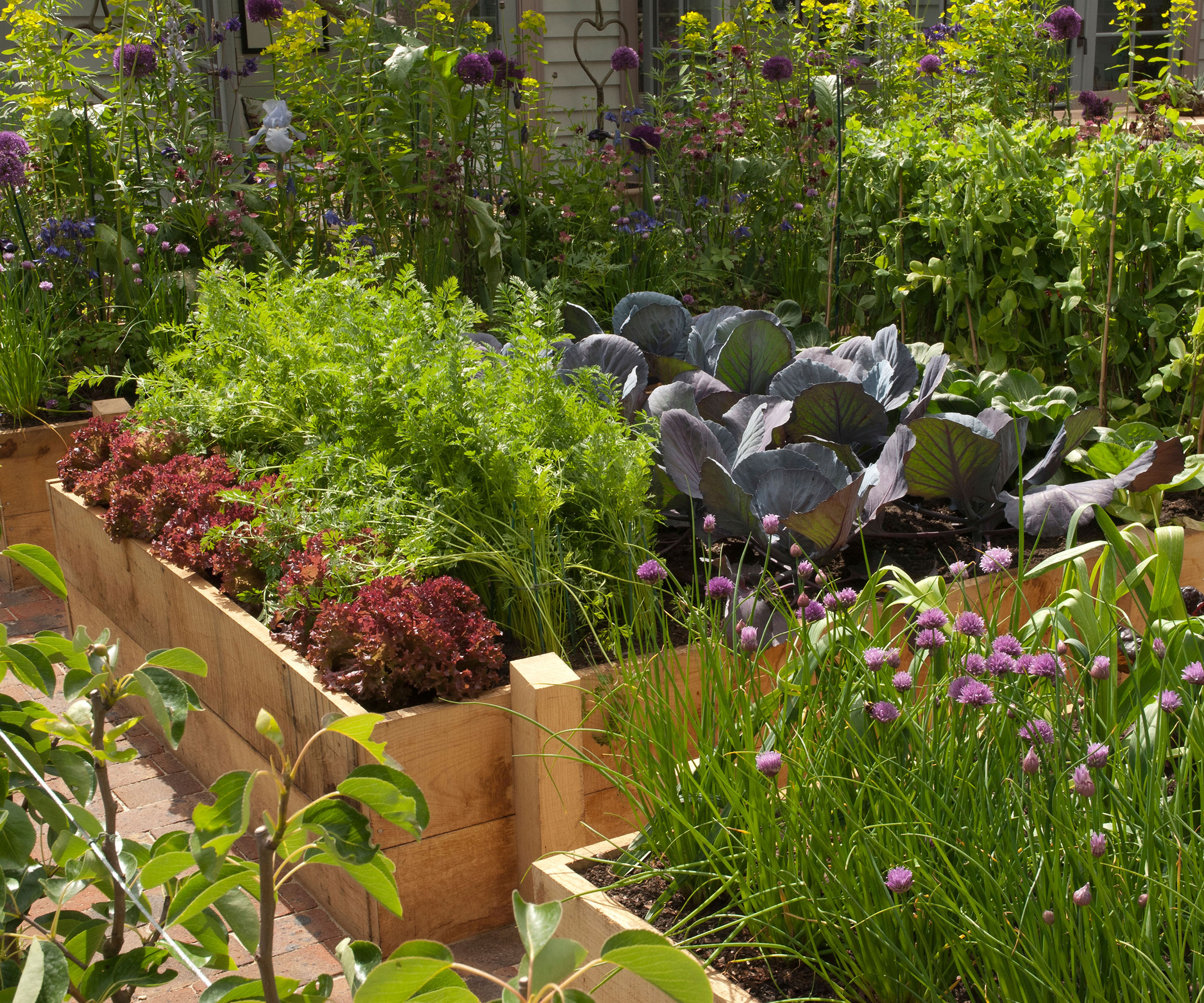
Be creative with spaces and shapes in your vegetable garden
2. Start small
If you are planning how to start a vegetable garden in your backyard then the potential size is likely dictated by what yard space you have. Some people may have grand plans when planning a kitchen garden, though if you are new to vegetable gardening then it may be best to start with a small space.
Starting with focusing on small vegetable garden ideas allows you to learn and get that satisfaction without the risk of getting frustrated by a large vegetable garden that gets weedy and out of control quickly. By starting small it means you can get a feel for how long things take to grow and nurture and the time involved in weeding, watering, fertilizing and harvesting.
It can take up more time than first expected and no-one wants to get disillusioned by turning over a huge space in their backyard to a vegetable garden that they don't actually have the time in their busy lives to tend. If you do want to transform a large area, then it can be done slowly or sections not cultivated covered with thick cardboard or plastic to smother weeds.

Even a small backyard vegetable garden can be highly productive
3. Test your soil
Your soil is going to be the most important element when you start a vegetable garden – it will make or break the success of your plot. It is recommended to test your soil to see its type, pH, and nutrient make-up before planting anything so you know what you are working with. And it gives a chance to make any amendments if required. A pH test will tell you how acidic or alkaline your soil is, ideally it would be neutral as that is best for most plants. An example of a home soil testing kit is the Luster Leaf Products Professional Soil Kit available at Amazon.
For a vegetable garden, the soil type ideally wants to be loose and well-draining. Clay soils can be very heavy and sandier soils too light – the structure, fertility and soil health of any garden can be boosted by adding compost, well-rotted manure, or organic matter into the site and continuing to do so year-on-year. Additional fertilizers can be used too to provide a short-term boost that plants will benefit from.
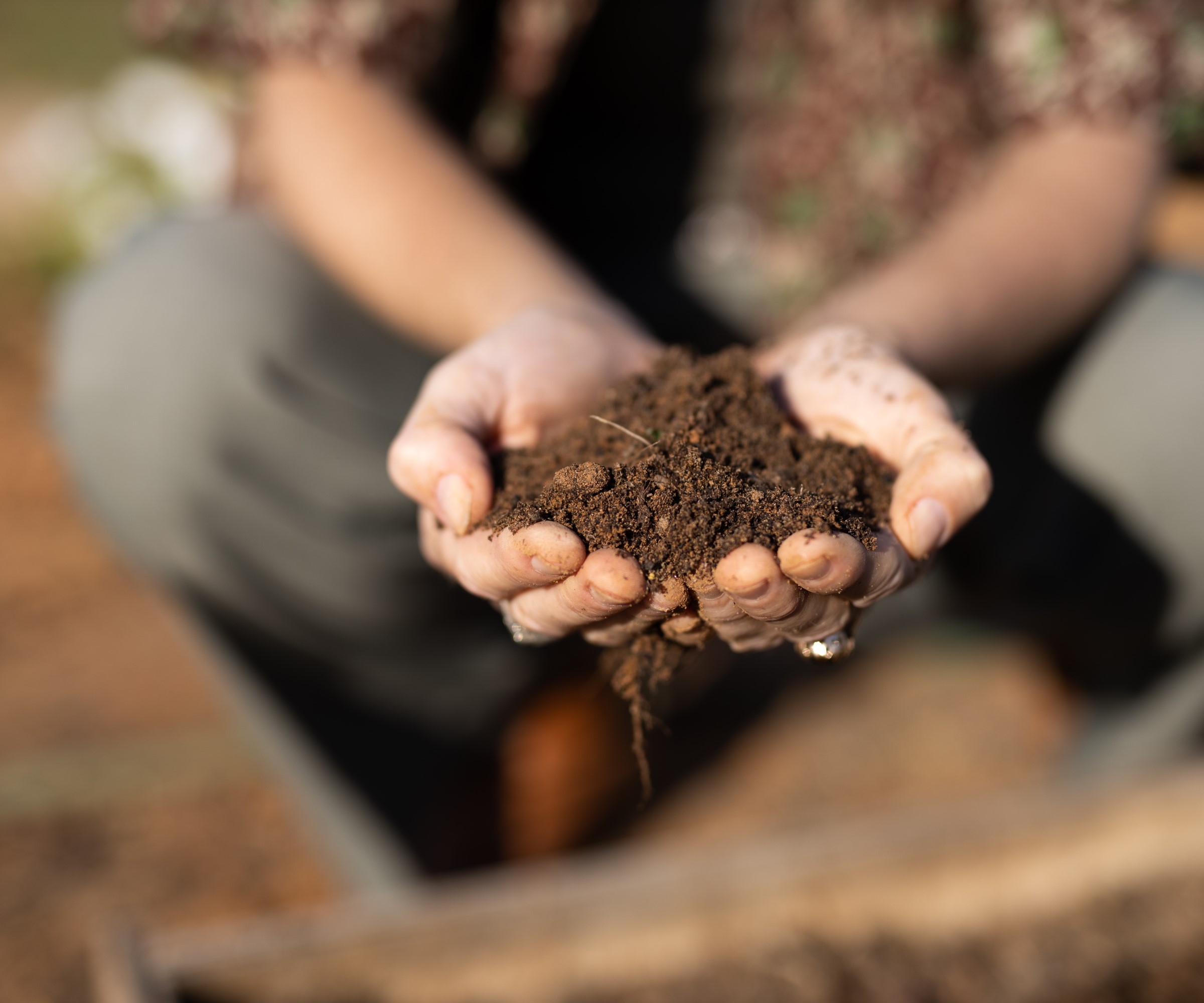
Improve the soil in your vegetable garden and your crops will thank you
4. Managing your vegetable garden
Once you have identified the perfect spot for your plot, the next step for starting a vegetable garden is to actually consider how you want to manage that patch.
Traditionally, growers would dig their plots every winter – either by single or double-digging – and work in lots of well-rotted manure or organic matter as they went. However, nowadays there is more of a common thinking that no dig, or no till, gardening is the way to go. It is thought that too much digging and working of the soil actually harms the structure and the beneficial microbial life within the soil.
No dig gardening involves laying a base level of cardboard and then mounding the compost or organic matter on top – adding to this each winter. The materials smother weeds and rely on worms to incorporate that compost down into the soil over time. It is now a very popular method of growing and has many benefits – I myself started running my allotment using no dig principles and have worked in kitchen gardens that were no dig. I found them highly successful ways of growing and I would class myself as an advocate for that growing method.
Alternatively, you can create full vegetable gardens using raised beds and that allows you to have more control over the soil that you are growing in. Raised beds can also be beneficial for anyone with mobility issues as you can adjust how tall a raised bed should be to suit your needs. You can build a raised garden bed from wood, bricks, metal or other materials, or get construction kits such as the Costway Wooden Vegetable Raised Garden Bed available at Walmart.
There is also the option of growing in just pots and containers, and it means there is lots of scope for vegetable garden container ideas. This can provide the opportunity to grow vegetables even if you do not have much outdoor space and can only grow on patios or on a balcony garden.
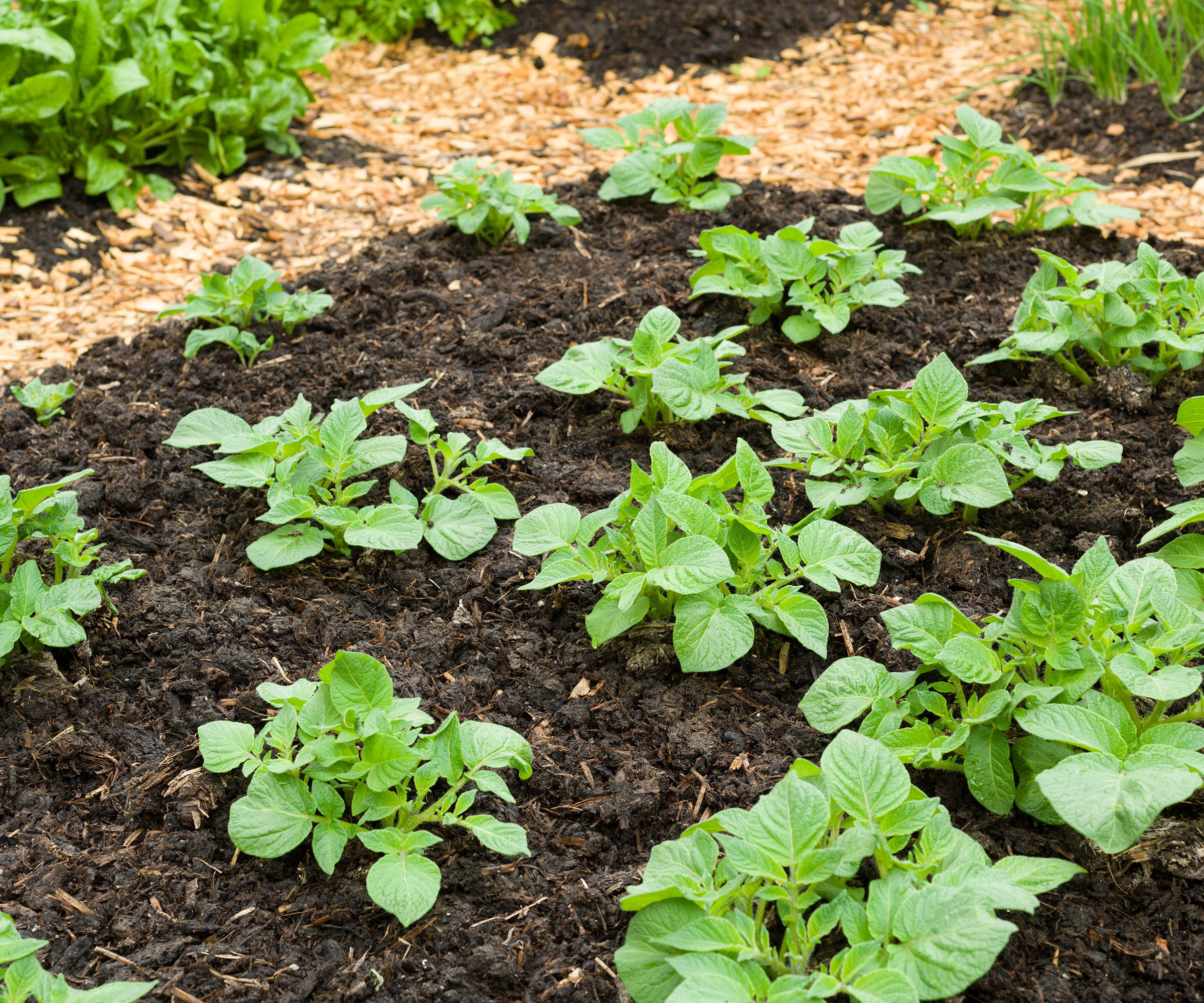
No dig vegetable garden beds are simple to make and easy to manage
5. Clear and weed
Before you get to sow any seeds or put any plants in the ground, there comes the task of clearing the area and getting it ready for your vegetable garden. The amount of work involved will depend on where you are planning the plot and what stood on that area previously.
Any rubbish, debris, bricks or large stones need to be removed and the soil needs to be cleared of any weeds, especially perennial weeds that must be removed fully with the roots to stop them coming back. If you want tips for how to get rid of weeds, you can remove them by hand, smother them to suppress the weeds, burn them, or use chemicals as a last resort.
If you are planning to convert an area of lawn, the turf also needs to be lifted. That is unless you are planning to go no dig or do a lasagna garden as those beds can be created directly on top of existing lawns or weeds. If you lift an area of lawn, then stack the turf upside down and it will break down over a year to give you lovely homemade compost that can go back onto the bed.
If you wish to, dig and turn the soil and break down any big clods and work in lots of compost or organic matter as you go before raking the bed level.
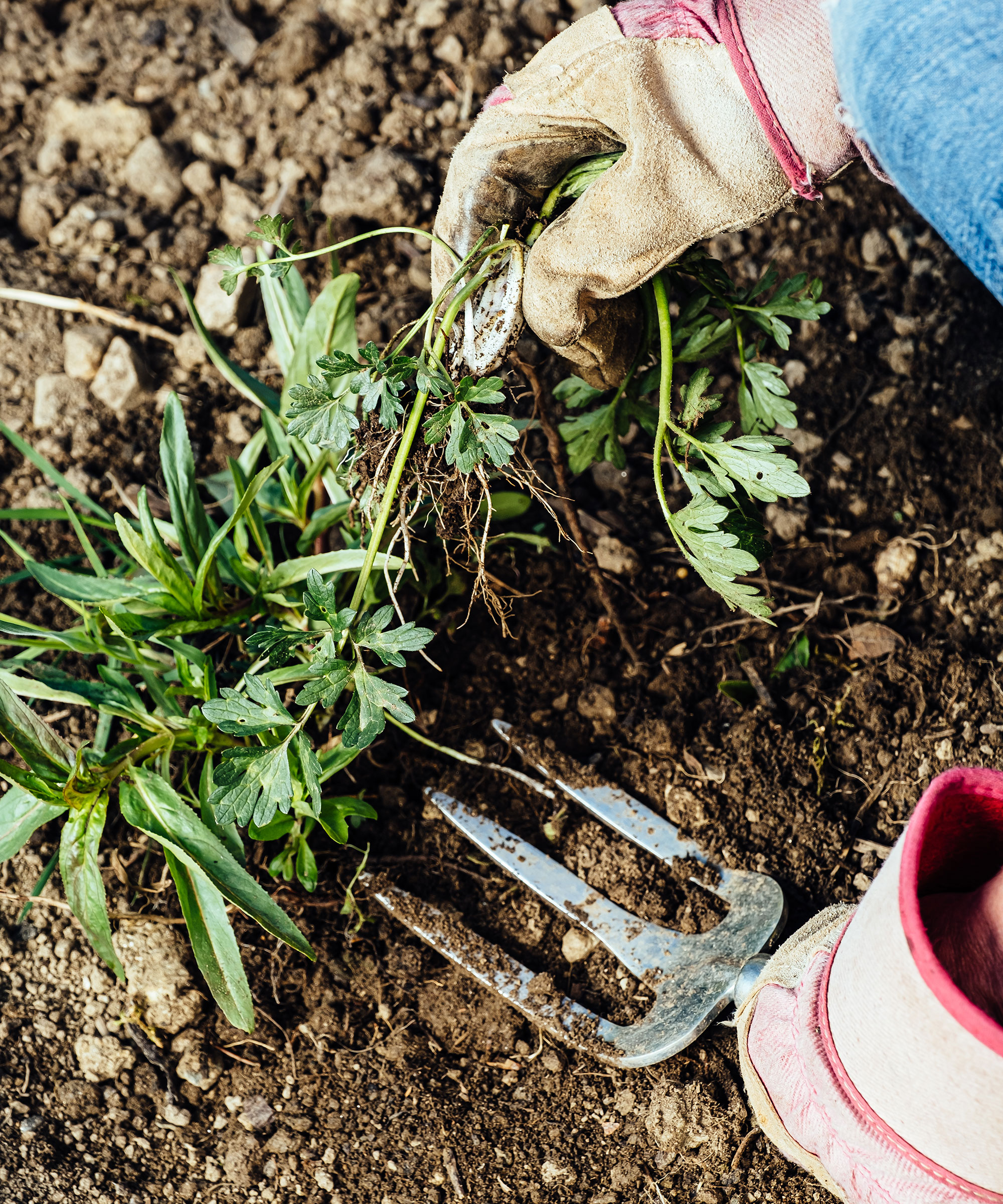
Weeds are likely a constant battle that needs to kept on top of
6. Choose your crops
Surely one of the most exciting parts of thinking about how to start a vegetable garden is planning what you are going to grow. There is such a huge and varied range of vegetables that you can grow and perusing websites and seed catalogs could be potentially daunting to a novice.
However, the best way to go is to grow what you and your family like to eat. There is always room for some experimentation but a good way to start is to think about what you eat regularly and focus on growing that. If you eat a lot of carrots, opt for looking at how to grow carrots – even for that one root crop there will be so many different varieties that you can try that you will not see in grocery stores.
Another good tactic would be to start off trying some of the easiest vegetables to grow, things like lettuce, radish, peas, beans, carrots, kale, or beets. A good piece of advice would be to not rush and go with the seasons. When you start sowing or planting always follow the advice on seed packets to avoid making any common seed sowing mistakes. It can be easier said than done, but restrain yourself from trying to sow or plant things early as, on most occasions, it does not end well.
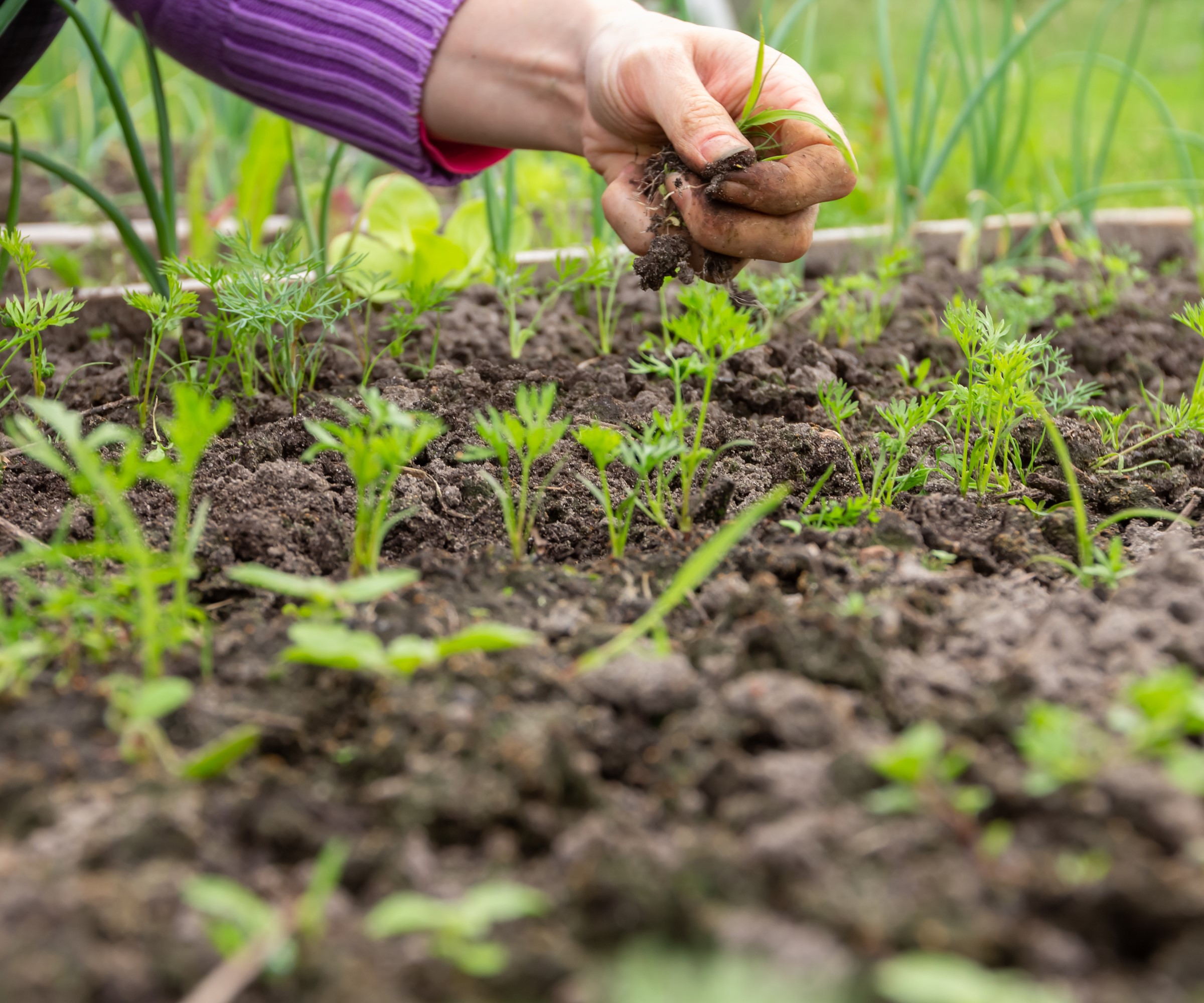
Carrots are a popular vegetable garden crop and are sown direct into the soil
7. Pick your growing method
After flicking through the seed catalogs or browsing retailers websites and deciding what vegetables you want to grow in your garden, comes the next decision – how to grow them. There are often several choices available. You can either grow them from seed, buy small plug plants to pot up and grow on, or get plants that can go straight out into the vegetable garden.
Each one comes with their own advantages and disadvantages. For example, seeds are the cheapest way to grow vegetables but you often need somewhere warm to germinate them – if you want earlier crops – and space to propagate and grow them on.
Seeds can be direct sown into the ground when the soil warms up, and root crops such as carrots and parsnips always need to be direct sown, however it can be a more inconsistent method than sowing seeds indoors and growing them on to plant out.
Plugs or plants can be sourced online or in garden centers and are a more expensive option – though plugs are cheaper than fully grown plants – but they can provide a more instant impact as they are easier to grow and can be planted straight into the plot.
Think about what works best for you in terms of budget, time, and space and, if in doubt, try to keep things simple as possible.
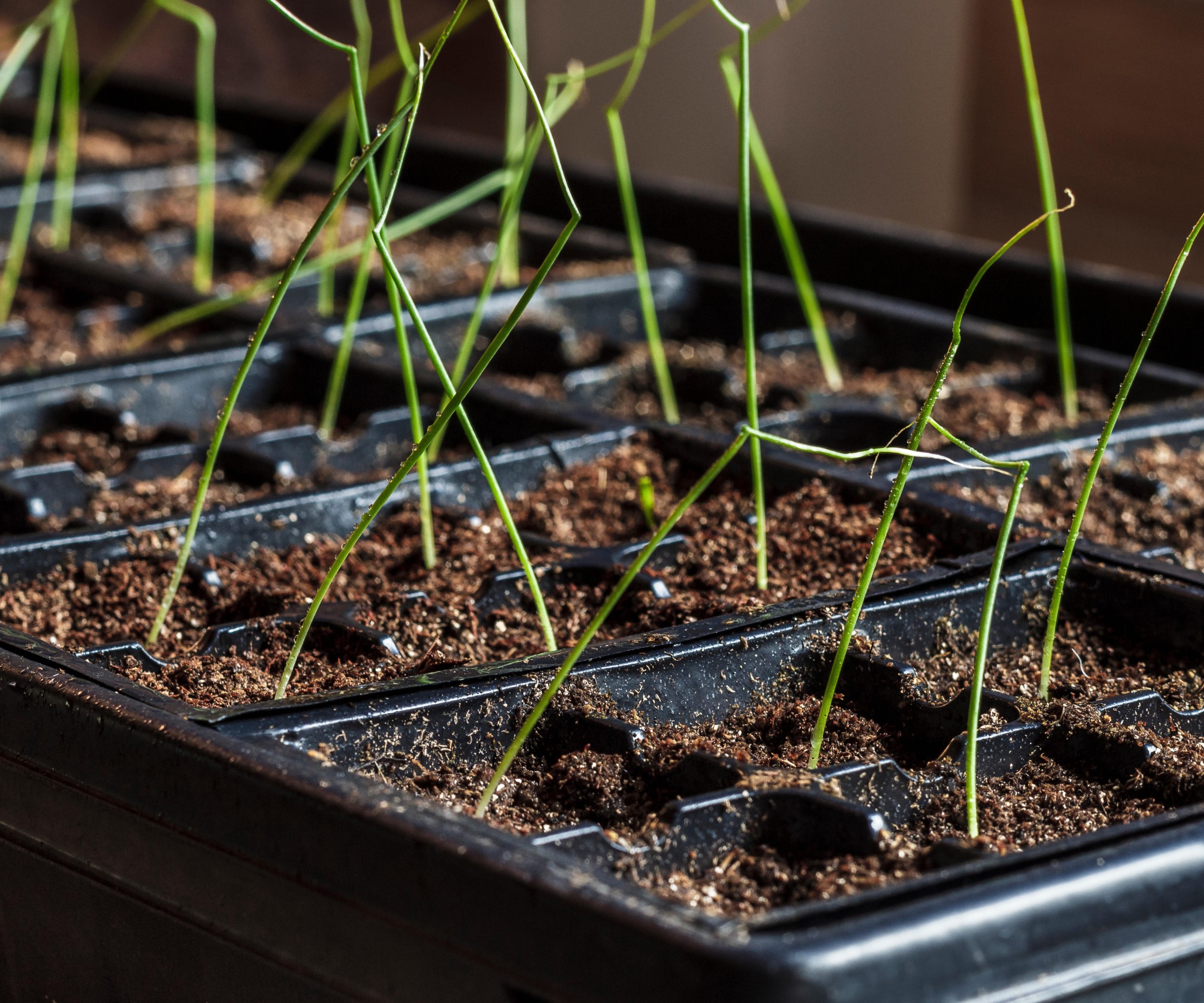
Many crops can be started indoors and transplanted into the vegetable garden
8. Crop rotation and companion planting
When planning your vegetable garden and deciding what crops will grow where, it pays to take crop rotation and companion planting into serious consideration.
Crop rotation means moving where you grow vegetables around the garden year-on-year. This offers several benefits, including preventing the build-up of diseases in the soil and it can improve the fertility in the soil, helping you get bigger yields from your crop.
Companion planting is an organic method of protecting crops from pests and diseases, by the simple process of planting beneficial crops near each other. Some crops, for example alliums like onions and garlic, prevent pests from attacking others by the smell that they emit. So using them for carrot companion planting, for example, means the smell of the onions will deter carrot fly.
If you do some research beforehand then you will discover that both crop rotation and companion planting can be used to offer simple and organic pest and disease control for your vegetable garden, they are an easy win for the grower.
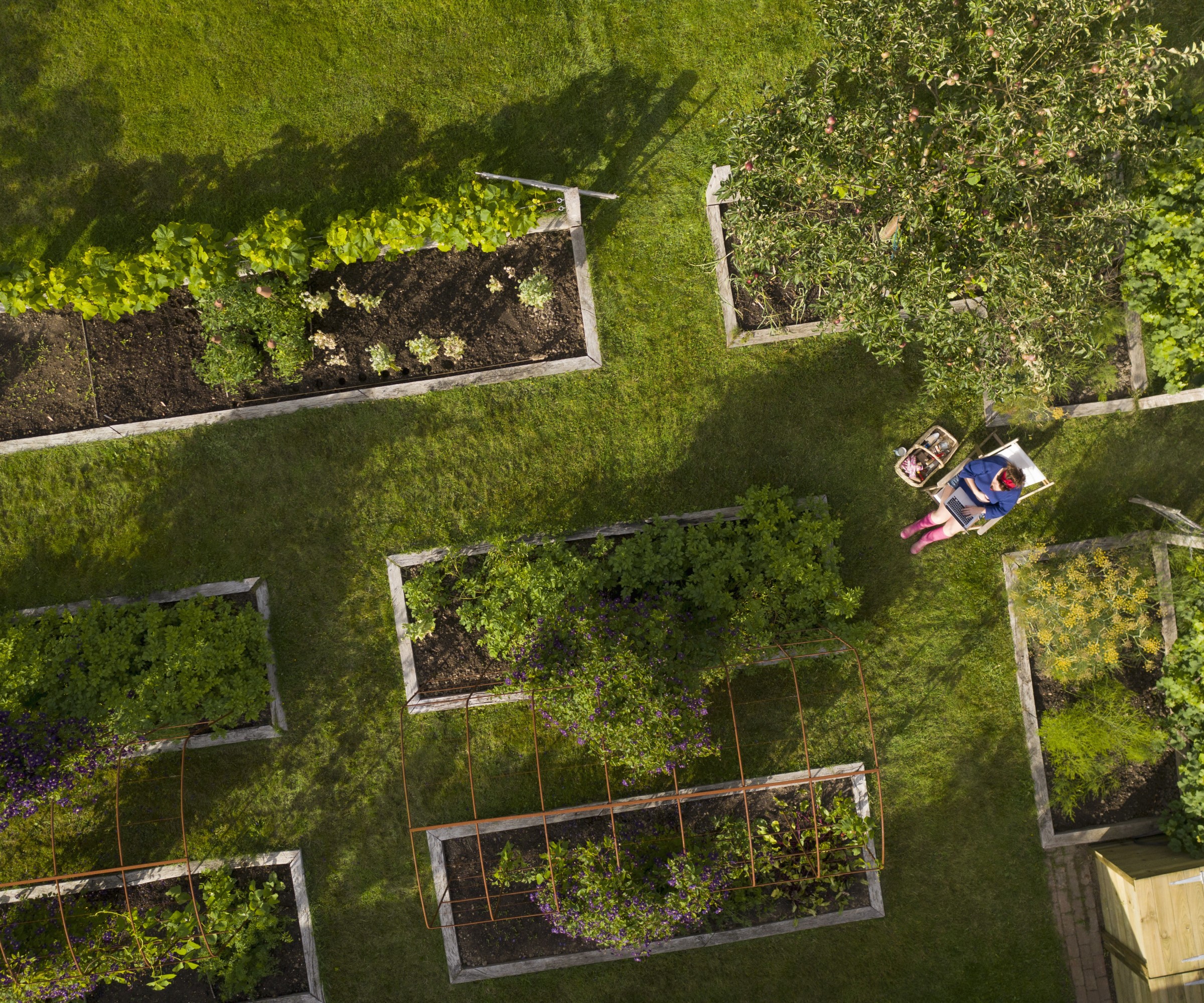
Vegetable gardens can easily be made on top of existing lawns
9. Get inspired
Here comes another fun part of how to start a vegetable garden. That is the process of designing and planning the vegetable garden. Here is the chance to get inspired and be creative to create the vegetable of your dreams.
Look at a lot of books and magazines and also use social media such as Instagram and YouTube to see other people’s vegetable gardens and get inspiration. There are so many popular vegetable gardening influencers that can be seen publishing daily pictures and reels of their plots, with gardens ranging from large kitchen gardens to homesteads, allotments, and tiny urban vegetable gardens in small backyards.
There are tips, tricks, and gardening advice to be found out there all across social media – so use that as a tool when thinking about how to start a vegetable garden in your backyard. There will be many growers who started off with a space exactly the same as you are planning, so why not borrow a few ideas of those who have succeeded?
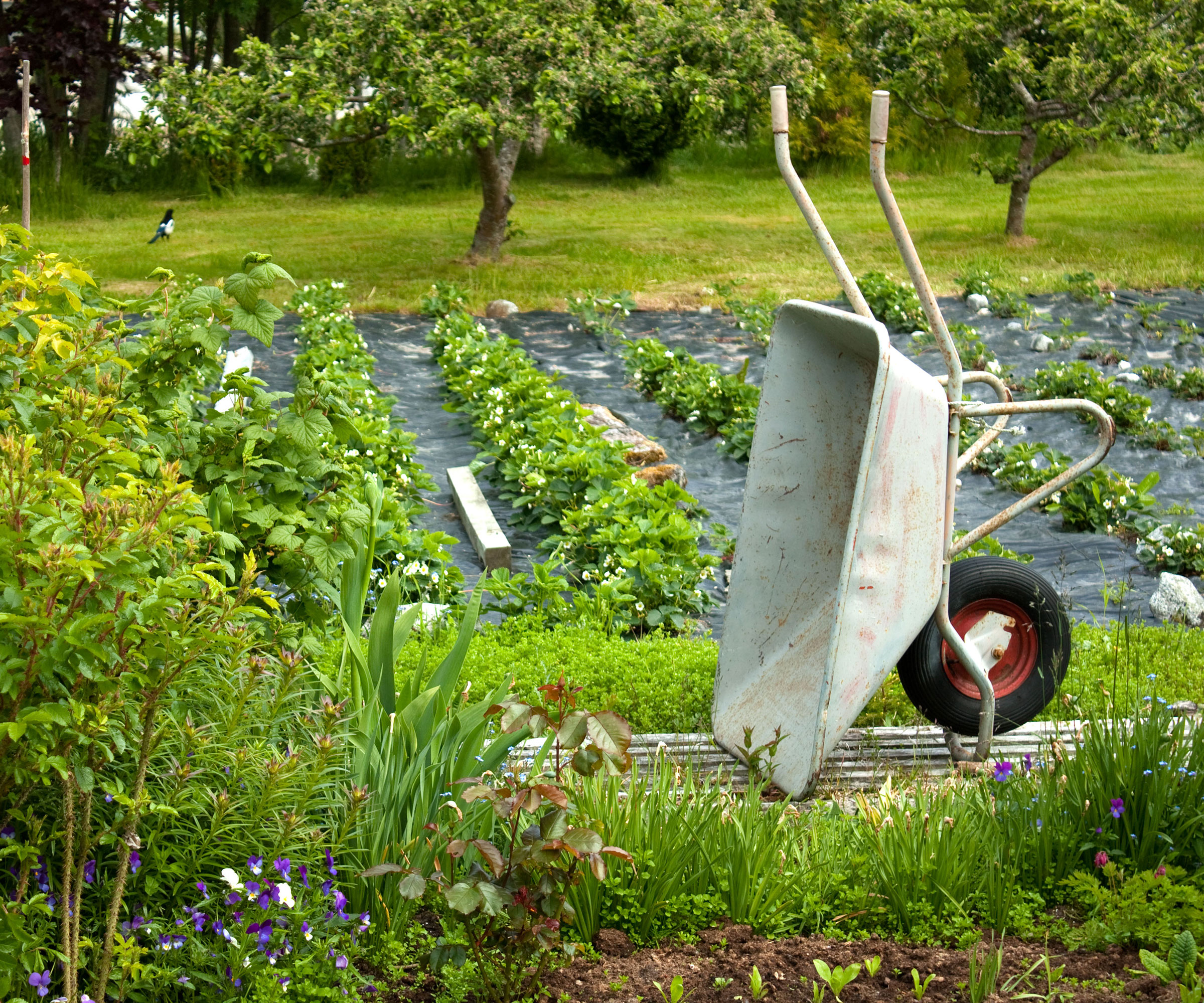
Many different materials can be utilized in a backyard vegetable garden
10. Buildings and structures
This might just be the luxury for those who have larger backyards or bigger budgets, but at the start of planning a vegetable garden is the best time to plan for any large structures or buildings you want.
Structures such as greenhouses, polytunnels, or cold frames can help increase the vegetables you can grow, opening up the door for more heat-loving plants that maybe would not thrive outside in your climate. The list of vegetables to grow in a greenhouse is long and most crops will be able to take advantage of that protection, even through the colder winter months.
Such buildings also allow you to extend the season, start sowing seeds earlier, and give you indoor areas to potter if you still want that gardening fix when the rain comes. Greenhouses and cold frames are also a great way of protecting plants from frost and backyard greenhouses are now more popular than ever. There are also plenty of ways of creating a DIY greenhouse, so even if budget is tight there are options available to you.
Though not as glamorous, incorporating a shed or backyard building into your vegetable garden can boost your backyard storage so you can store and organize tools and accessories. It also helps to declutter a backyard and means you don't have to carry tools a long way to the plot.
There is also the chance to consider putting wires on walls or fences to grow climbing crops on, or put in arches or other garden structures that vegetables such as squashes can climb. This allows you the chance to grow vegetables vertically and take advantage of using space that is not always utilized.
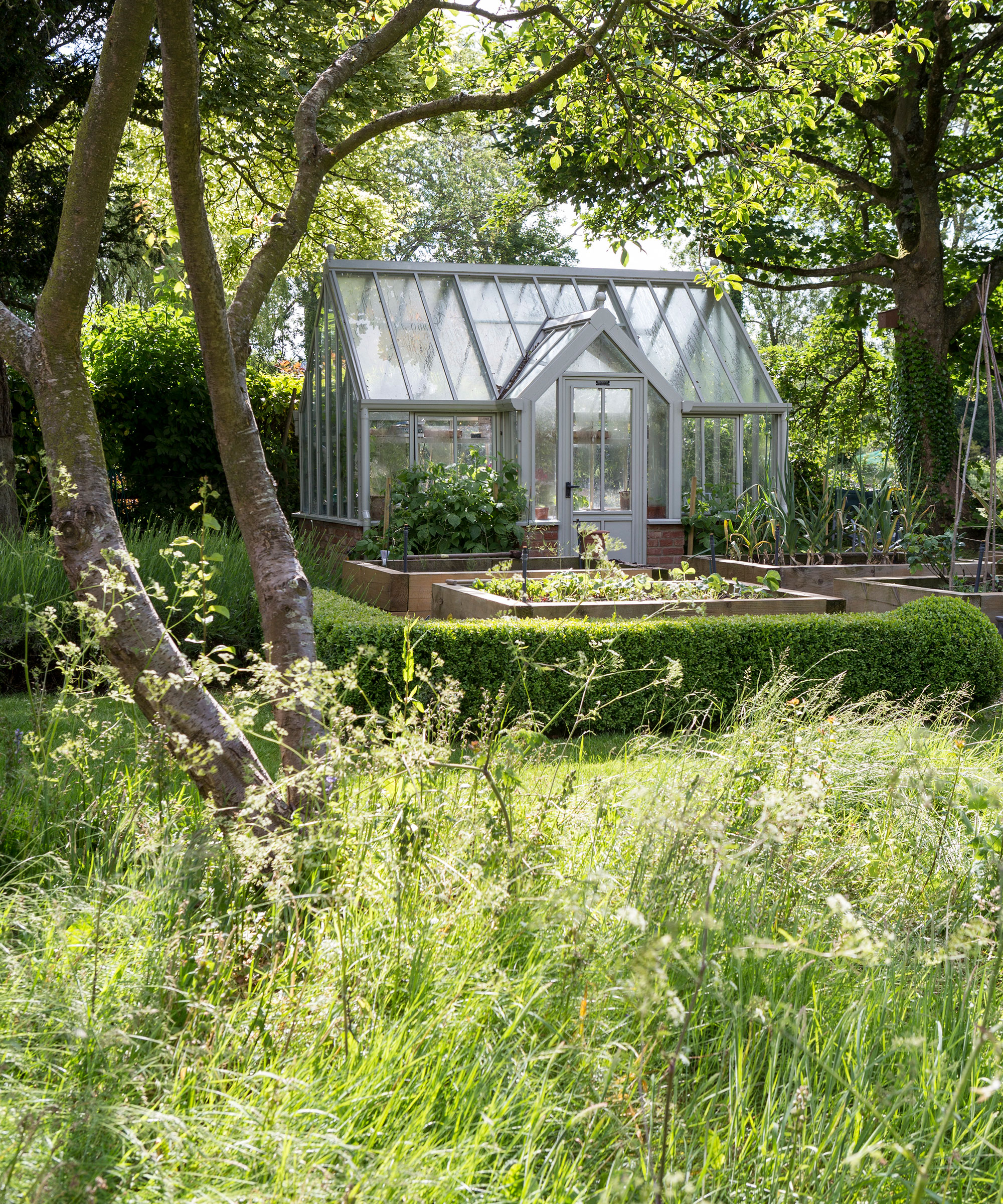
A glasshouse allows you to grow more tender crops
FAQs
Can I turn my lawn into a vegetable garden?
Yes, you can easily convert a lawn into a productive vegetable garden. There are a couple of different methods available. You can remove the turf from the lawn using a spade or turf lifter, which will remove the top few inches of turf. Then dig the area over, removing weeds as you go and incorporating organic matter in the soil before raking it level.
The alternative is to make a no dig bed on top of the lawn. This is done by simply laying cardboard directly on top of the turf and then adding a thick layer of compost – around 4-6 inches – on the cardboard. You can then plant or sow straight into the bed after it is raked level.
What kind of soil is best for a vegetable garden?
Soil tends to come in three types, clay, sand, and silt. You will also regularly see the term loam used to describe soil and that means an ideal combination of the three, usually around 40% each of sand and silt and 20% clay. Loam retains water and holds nutrients, while also drains excess moisture well.
Unsurprisingly, loamy soil is the ideal soil for most plants, and that includes vegetables. It should also have lots of organic matter mixed in – such as compost, well-rotted manure, or leaf mold – that can provide nutrients, improve soil structure, and help with drainage. Test your soil to see its make-up of clay, sand and silt to understand what adjustments need to be made to create a perfect loam.
Starting a vegetable garden is an exciting prospect and an experience that should be enjoyed. Growing vegetables at home has the potential to transform your life and, even if starting off small, I would recommend it to anyone. Do your research and your planning, and then go for it.
Remember to take lots of pictures to track your progress and make lots of notes of what you grow and how it goes. Not only are they cherished memories, but it will help you transform your vegetable growing year-on-year as you can see what worked and what didn't do so well. If you have space to start even a small vegetable garden with a few pots, then I encourage you to give it a try.
Sign up to the Homes & Gardens newsletter
Design expertise in your inbox – from inspiring decorating ideas and beautiful celebrity homes to practical gardening advice and shopping round-ups.

Drew’s passion for gardening started with growing vegetables and salad in raised beds in a small urban terrace garden. He has worked as a professional gardener in historic gardens and specialises in growing vegetables, fruit, herbs, and cut flowers as a kitchen gardener. That passion for growing extends to being an allotmenteer, garden blogger, and producing how-to gardening guides for websites. Drew was shortlisted for the New Talent of the Year award at the 2023 Garden Media Guild Awards.
-
 I've never considered this unexpected kitchen cabinet design before – but Amber Interiors' latest project proves it's the chicest way to add texture to your scheme
I've never considered this unexpected kitchen cabinet design before – but Amber Interiors' latest project proves it's the chicest way to add texture to your schemeThe paneled cabinetry truly brings the design to life
By Molly Malsom Published
-
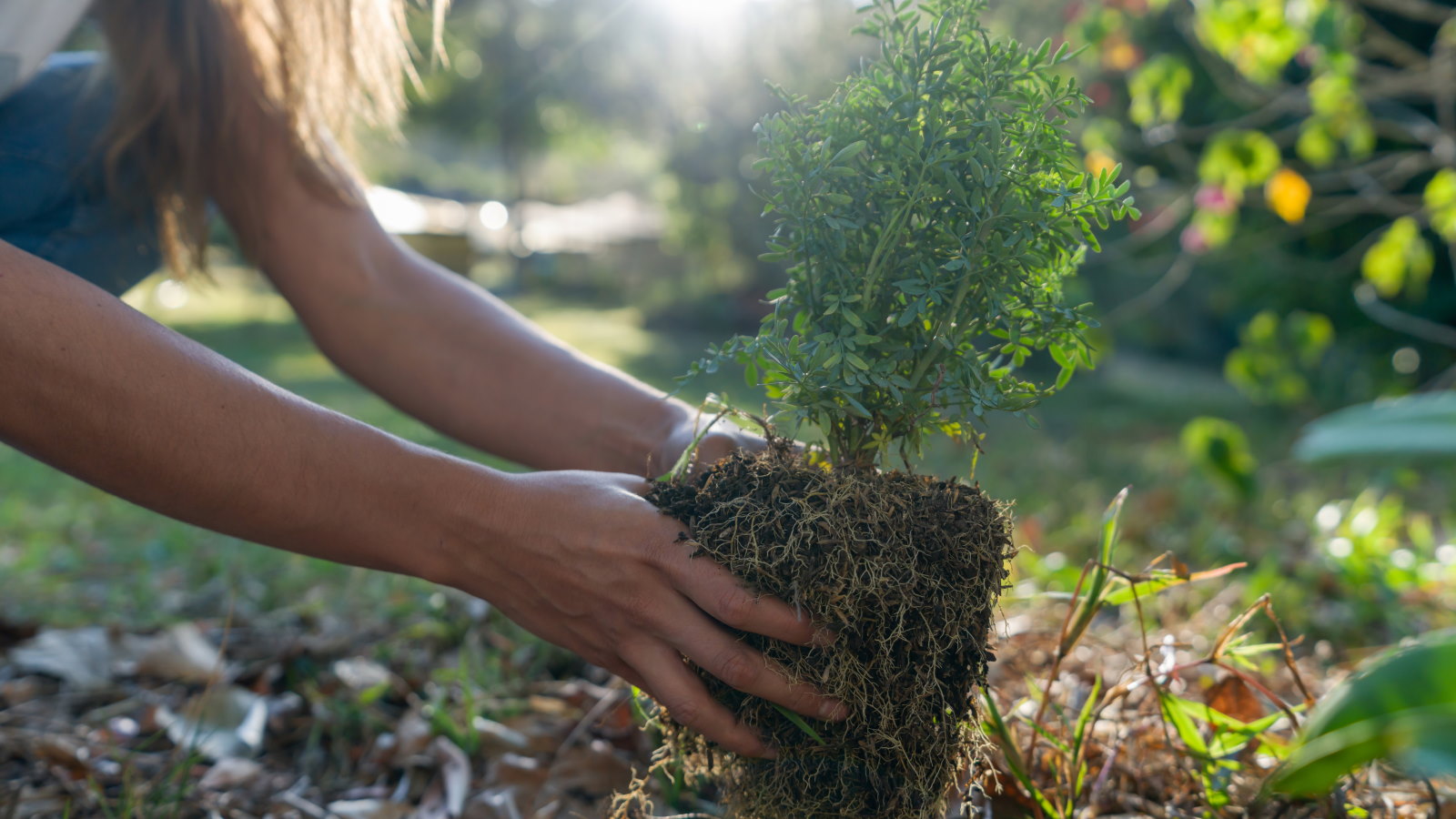 7 shrubs to plant in April to transform beds and borders – including native plants and bushes suitable for dry or wet spots
7 shrubs to plant in April to transform beds and borders – including native plants and bushes suitable for dry or wet spotsThese shrubs can bring flowers, texture, and fragrance, as well as attracting beneficial insects and birds
By Drew Swainston Published